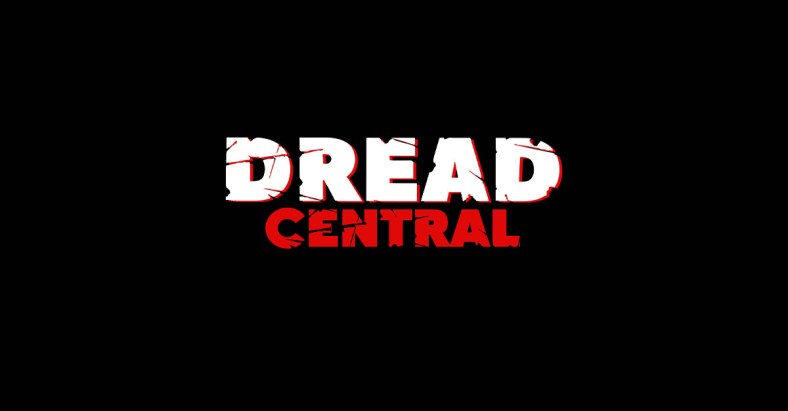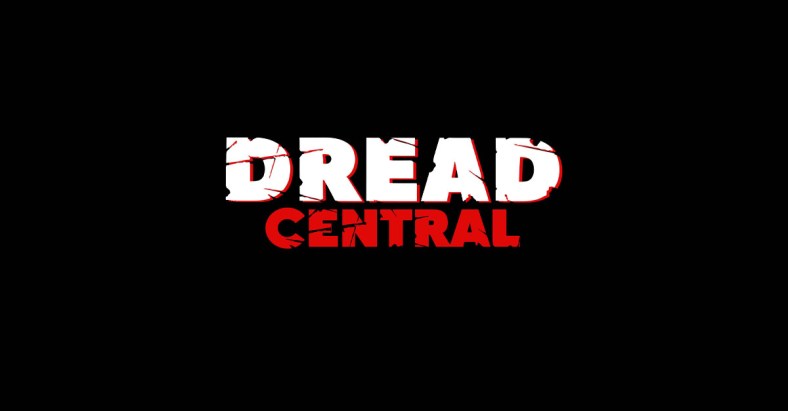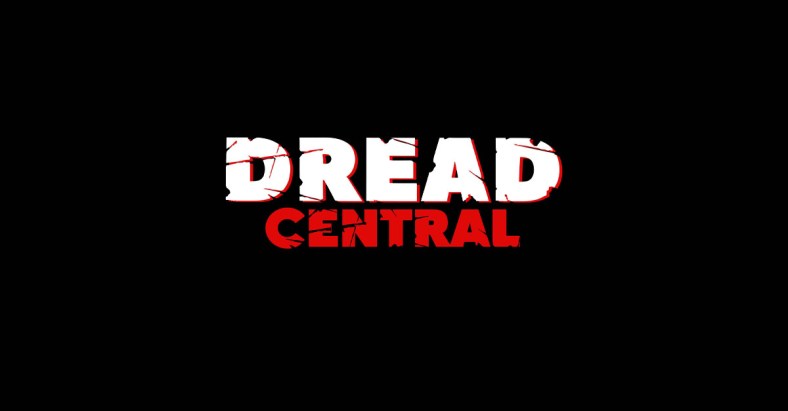Interview: Arrow Video on Remastering LAST HOUSE ON THE LEFT

Beyond the gorgeous 2K remasterings of countless hard to find horror gems on Blu-ray, the Arrow brand has become synonymous with exceptional quality, collectability and above all things, passion. So much love is put into every single detail of each release, the pièce de résistance often being the gorgeous artwork created by super-talents like Graham Humphreys, Paul Shipper, and Gary Pullin.
I first fell in love with Arrow Video 3 years ago when I ordered their release of Mario Bava’s giallo staple, Blood and Black Lace. Unaware of the brand at the time, I was blown away by the level of quality and attention to detail and became instantly obsessed. I started snatching up as many of their releases as I could get my hands on, in many cases of films I’d never even seen! That’s how much the Arrow stamp of approval has come to mean for horror fans.
Most recently, Arrow released their remastering of Wes Craven’s classic The Last House on the Left and it does not disappoint. The very generous wealth of special features includes countless interviews, multiple commentaries, the movie’s soundtrack on a separate CD and 3 remastered cuts of the film that somehow retain the movie’s grindhouse grain and grime, even in 2K. (See our previous coverage for a full list of special features).
The biggest highlight for me was Still Standing: The Legacy of Last House on the Left, an hour-long documentary-style retrospective of the film that’s loaded with anecdotal stories and details, some of which are fascinating. For instance, when the movie came out in 1972, producers would audience-test multiple titles of films to see how they performed. The movie originally played with the titles: Sex Crime of the Century, Night of Vengeance and Krug & Company before an advertising executive friend of producer Sean Cunningham recommended the name The Last House on the Left. The adman also came up with the now infamous longline: ‘To avoid fainting, keep repeating it’s only a movie, it’s only a movie,’ which Cunningham claims was the impetus that got people to see it in droves.
We wanted to dive deeper into the Arrow Video process and learn what goes into the creation of these releases so we sat down with Arrow’s own Ewan Cant who produced this remastering of Last House on the Left.

Dread Central: Ewan, great to talk to you!
Ewan Cant: You too mate, thanks for having me on.
DC: So what’s an average day like for you at Arrow Video?
EC: Either tackling the archives, getting a release to the finish line, overseeing the authoring of a disc by making sure all the artwork is complete then proofing all the content. Also longer-term stuff, like making connections with filmmakers, gauging their interest in being involved in the re-release … I kind of moved on to the acquisition side in the last two or three years so I spend quite a lot of my time just sorting through the garbage bins of eighties horror movies and looking for the old gems that I can dust off and re-present to the world.
DC: That sounds like a dream job to me, watching eighties horror all day and looking for ones to remaster.
EC: Yeah, we focus most on the seventies and eighties. That’s the typical day, it’s split between prepping further off projects, finishing up on projects and researching or possible acquisition stuff.
DC: In the beginning, Arrow seemed to be focused on finding more undiscovered gems but now you’re putting out some pretty big releases, between The Hellraiser box set, Last House on the Left and The Hills Have Eyes, you guys are starting to do bigger movies. Does that represent a company shift in focus?
EC: I wouldn’t say it’s a shift. Obviously, we want to get our hands on as many of the big horror genre movies as we can. I guess maybe we’re in a position where we are able to take on some of those bigger titles perhaps because of the reputation we’ve built up for ourselves … Two years ago, we did The ‘Burbs in the UK, which was probably the most commercial thing we had done up until that point … but the projects that get me the most excited are ones where we’re taking a film from VHS obscurity to a brand-new Blu-ray release and giving those wonderful movies a second chance.
DC: Obviously a lot goes into every single release, could you talk about the overall process of producing Last House on the Left?
EC: As a horror fan, Last House on the Left has always been in my top three favorite horror movies of all time … I would have raised all hell if I hadn’t been given the project! I was aware very early on that we were acquiring it, so as soon as you know that it’s in the pipeline, the cogs start turning and you start thinking, you start picking up old Blu-rays off the shelf and thinking about what possible angle hasn’t been covered, and all kinds of extras you’d like to see on the release. It’s been on the radar for quite a while, so I had quite a lot of time to think about the package we were going to put together. Once it’s finally signed off on and we’ve got the deal for it, you start thinking about the artwork. You want to have that artwork make that big splash when you announce the title … it really gives people that visual impact.
DC: The Arrow artwork really breathes new life into the releases and captures the soul of these movies from entirely different angles than their original marketing material or posters which I think is really fascinating.
EC: Yeah, Paul Shipper did this one, he also did the artwork for The Hills Have Eyes as well. I think the two go together and make nice companion pieces.
DC: Yeah, I’ve got them both laid out on my living room table and I’m admiring them as we speak. Goddamn, they look amazing!

EC: Commissioning artwork is definitely one of the aspects that I enjoy the most because you get to be creative by proxy. When the artwork comes back and it’s just as good or exceeds what you anticipated, it’s a real kick.
DC: It’s not just the artwork itself that looks great in the Arrow releases, it’s the packaging materials too. I’ve never seen Blu-rays packaged with this kind of paper grade, it even feels good to the touch from a tactile perspective! You guys are like the Apple of genre Blu-rays!
EC: Haha, thanks.
DC: Can you talk about how you made your way to Arrow Video from a career perspective?
EC: Ten or so years ago I began writing articles for a couple of horror publications because that was the only outlet that I saw for me as a horror enthusiast. I didn’t really consider it at all as an actual professional pursuit, but then I ended up working for a film sales agent called Wild Bunch in Paris. That gave me a taste of the film industry. It wasn’t directly related to what I’m doing now, but I did have the chance to work on a couple of horror DVD releases in collaboration with Fright Fest, the big horror festival over here. It gave me much-needed experience working in distribution and seeing how it’s put together and released … Then there was a role advertised at Arrow that I went in for … I didn’t know that getting into the distribution of obscure seventies and eighties horror movies was an option so, in many ways I sort of forged the role myself. I came in to oversee the production of releases and I still get to do that, but I expanded into acquisition side and actually finding these films – basically curating my own Blu-ray shelf.
DC: That’s gotta be so much fun. Yeah, I’m pretty sure that binging on 70’s and 80’s horror movies with tacos and red wine is my favorite thing in the world to do, with my shoes on anyway.
EC: The Mutilator was one of my first titles and that was purely because I’ve wanted to own it on Blu-ray for a long time … suddenly I was in a position where I knew a bit about how you acquire a film and put a release together, and I just kind of thought, well, screw it. I’m just going to give it a shot.
DC: Scratch your own itch, so to speak.
EC: Yeah, that’s a way to put it.
DC: As you were working on Last House, were you in touch with Wes Craven’s family at all?
EC: Not me personally. This has obviously been one of my big regrets … I was lucky enough to meet George Romero three years ago when he was in London with his wife.

DC: Didn’t you meet Tobe Hooper too?
EC: Yeah, when we did Eaten Alive. I also met Jörg Buttgereit, he’s one of my favorite filmmakers.
DC: Who?
EC: Jörg Buttgereit. Who did Nekromantik. Only released it in the UK but I spent quality time with him as well.
DC: Yeah, I’m waiting for the US Arrow release on that one.
EC: Yeah, I’m lucky enough to say I’ve been able to collaborate with a lot of my horror heroes. It was bittersweet working on The Hills Have Eyes and Last House on the Left and not being able to have Craven’s input or share stuff with him. We want to have the filmmakers as involved as they like. So that was definitely a regret. I dealt a lot with Sean Cunningham (producer of Last House on the Left and lifelong friend to Wes Craven). He was really enthused and helpful.
DC: I watched it again last night and I forgot how brutal it was … it’s got such nihilism, it’s just real nasty evil … you don’t necessarily see the violence unfolding, there’s a lot of cutaways, and you don’t see a lot of it, but you can just feel it. I actually had a really tough time watching it. I was surprised, like, ‘wow, this movie still works today, it must have really blown people’s fucking minds in 1972’.

EC: I sat down to watch it again maybe six months ago when we were really starting to get down to work on the release, and yeah, I was taken aback by how hard-going and ultimately how depressing it is … you forget just how intense some of the sequences are. Like you said, it really isn’t anything in particular you see. For me it really comes down to the style or lack of style that they apply to the film. The kind of shoot-from-the-hip, documentary-style filmmaking.
DC: It makes it so much more disturbing, that kind of stripped-down grindhouse style.
EC: It just feels incredibly real. It’s so intense and really cuts deep. I’m always kind of surprised when I come back to it and I still find myself feeling like that. The original script emphasizes what it could have been like.

DC: It may have been worse?
EC: It emphasizes what they were actually going for in the first place. They just kind of threw everything in there. Nipples being sliced off—it’s kind of bonkers. The last shot of the film in the original script is Phillis’s severed hand lying on the ground and it suddenly forms a “v for victory” kind of sign. It had a really weird kind of horror comedy aspect of it. Which implies that it was kind of tongue-in-cheek and it shows how extreme they were going with it originally. I guess there was a playful spirit there behind all the grotesque stuff.
DC: Is that script available?
EC: We wanted to reproduce it in the booklet but it was closed by MGM on the grounds of it being pornographic.
DC: Whoa, really?
EC: Yeah, they were quite upset about it.
DC: In one of the specials on the Blu-ray, Wes Craven spoke about how the movie was a reaction to violence in America in the backdrop of the Vietnam War. Did Arrow release this with any notion of relevance to today?
EC: I guess I would turn the question back and say, do you think that it’s particularly relevant today?
DC: I don’t know, possibly. It really struck me how brutal and effective it is. It made me wonder, if it’s as effective because it’s resonant with today. I’m not sure what it is but I feel like there’s still something there that makes it relevant.

EC: I think that the basic narrative captures something about the dark side of the human condition … If Last House can be seen to have a kind of resonance today, it’s only because I don’t feel that that dark side of human nature has gone away … I think it encapsulates something in the human condition that is as old as time itself, which is why it works and why it resonates … It’s why horror has a place. It does touch on these things that other genres wouldn’t necessarily.
DC: I realized in re-watching it that Last House is timeless. There aren’t a lot of movies you can say that about. I noticed that there was a CD with the soundtrack in here, which I thought was so cool. Is that going to be a new staple of Arrow Films going forward? Are you guys going to be including more soundtracks?
EC: When we get the opportunity. Obviously, the score has to be strong. So it comes down to whether we think its inclusion is justified.

DC: As an aficionado of eighties horror gems, what are some of your top picks?
EC: I’m actually wearing a t-shirt of it right now, it’s an eighties obscure slasher movie by the name of The Prey which is one that I tend to bore people about. I think it was shot in ’79. I love the slasher genre, some are cool and kind of predictable but there’s something about the format of them that I love. And I love seeing the different riffs of the various tropes, you know, the type of killer, the type of influence that makes them kill, and the setting, if it’s in the desert or the woods—there’s something that just always gets me about the kind of woodsy setting of the US, and The Prey really delivers on that front.
DC: Cool, on that note, let’s wrap this up, it was a real pleasure speaking, man.
EC: You too, man!
Author’s side note: In preparing for this article, I re-watched the 2009 Last House on the Left remake with Tony Goldwyn and Aaron Paul – despite initial outrage from fans of the original, it’s totally worth watching, if only for the last 2 minutes which might be one of the best revenge sequences in horror history (you’re very welcome).
Do you all think that Last House on the Left holds up as a timeless classic today? Let me know your thoughts in the comments below!
Categorized:News

